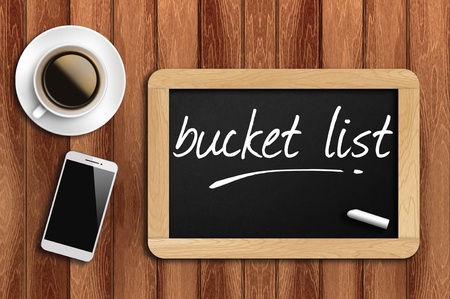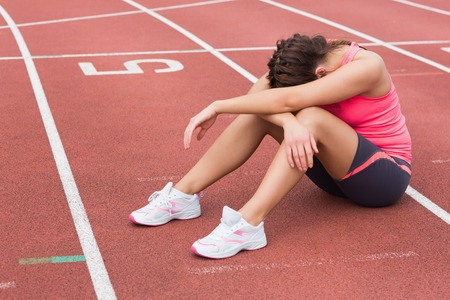I received a request via twitter from @iRun2BeFit asking if I had any swimming tips. It seems that she has trouble getting across the pool without being completely out of breath and exhausted. This is common for those who weren’t raised in a pool, especially those coming from a running background. Run a few miles, no problem. Swim 25-50 yards, gasp for air. If you are a non-swimmer, non-triathlete, new swimmer, or new triathlete incorporating swimming into your training plan, you are doing a good thing! First I’ll explain why swimming is good for you, especially for runners and cyclists, and then I’ll give some tips on how to make it a little easier.
Why You Should Swim
- Swimming works the total body. You will used your arms, shoulders, chest, back, core, and legs! If your primary sport is not swimming, getting in the pool works new muscles and will give those legs a break!
- Swimming is a no-impact sport. Your body doesn’t take any pounding and it will thank you later.
- Swimming stretches you out. Running and cycling compress the body posing additional stress. Swimming requires you to extend and lengthen your body.
- Swimming is a great method for active recovery. After our long training rides and run, or challenging interval sessions, our bodies are pretty worn out. Instead of doing nothing, help promote recovery by getting in some light activity, as easy swimming is a perfect way to do this because of the reasons mentioned above. By getting blood flowing in your tired muscles through light activity, you help nutrients get in and waste products get out.
My favorite recovery workout is 20-30 minutes of alternating 50 yards easy swim, 50 yards kicking. Pretty simple! You can kick with a board, on your back, and with or without fins.
How Not to “Drown” – Body Position is Key
Now to address @iRun2BeFit’s real question – how to not fight the water to get across the pool. Water is a dense medium compared to air. Triathletes and cyclists spend hundreds or thousands of dollars for the most aerodynamic bike to ride just a little faster. It doesn’t cost anything to become more hydrodynamic – except for some patience and your time in the pool.
Body position is the largest factor in swimming efficiency. You’ve already got to pull your body through the water, so why drag half the water in the pool with you? So keep the hips up to stay streamlined. Got that? Hips up. Keep them at the surface of the water.
Keeping your hips up is easier said than done (hence the time and patience needed). People with low body fat percentage (many runners), and from my observations, large chested women, have even more difficulty with this. Our chests are buoyant (thanks to our lungs), and we have to figure out how to keep the entire body at the top of the water, not just the chest. When our legs drag in the water, we are pulling a lot of extra weight, and usually fight to the other side of the pool ending up exhausted.
How to fix this: There are many “how to swim” websites and methods out there. Tri Swim Coach, Total Immersion, and Swim Smooth to name a few. (Check out Swim Smooth – it’s pretty slick). You can also google ‘Freestyle Swim Technique’ or go to YouTube and find videos of the world’s best swimmers. While your goal might not be to swim in the Olympics (but it just might!) you can learn a lot from watching the best. If you watch those videos look at two things:
1) Location of the hips with respect to the surface of the water. The hips will be really close to the surface.
2) How the kick is fluid and initiates from the hips. Runners and cyclists often have “bicycle kicks” with a lot of knee bend. This doesn’t help you stay streamlined, as the more you bend your knees, the farther out of streamlined you get. And then the catch-22 happens. You feel yourself sinking so you kick even harder, getting even further out of streamlined position. At the same time you are using large muscle groups that now demand oxygen. A fluid kick initiated from the hip will help propel you forward with less effort.
Drills:
I want you to be relaxed when you swim. The more relaxed you are in the water, the faster you will be able to swim when you refine your technique. But start with body position and the kick. Here’s what I’ve found to work, as the first step is to get a feel for what it’s like to be in the correct body position in the water while kicking. You can do these with or without fins. If you are having trouble, start with fins, but take them off every so often to really get a feel for your positioning.
1) Kick on your back. Keep your back straight (don’t arch it!) and lean into the water. Think about pressing your entire rib cage down, but keep the spine aligned. You want your hips at the surface and your head almost submerged (water near your goggles). Think about only moving your legs a couple inches (they will move more than that, trust me) while keeping your legs straight and relaxed (your knees will bend). Don’t lock your knees, but think about starting the kick from the hip. Stay relaxed!
2) Do vertical kicking. This will help you feel the kick from your hip. Go into the deep end, hold on to a kick board so it is vertical and holding you in a vertical position, and kick from the hip. The guy in the video below is good enough he doesn’t need anything to help him float, but at first, a kick board will help. Stay relaxed.
3) Kick on your stomach. With your head almost completely submerged, lean in with your chest to feel your hips pop up toward the surface. Just lift your head to breathe (your hips will sink) but put your head back in the water after you take your breath and lean in again with your chest and feel your hips rise. Stay relaxed.
4) Kick on your side. With your arms at your sides, point your belly button towards one of the walls and start kicking. You can also do this with the submerged arm extended so you really get streamlined. Just roll slightly (leading from the hip) to breathe. Stay relaxed.
If you work these drills in every time you are at the pool, you should start to feel more comfortable swimming. Remember, time and patience will pay off. Don’t rush to the other side of the pool. Stay relaxed and swim there.
Coach Nicole is the author of The Triathlete’s Guide to Race Week. She is also the founder and head coach for NEO Endurance Sports & Fitness, a Colorado-based endurance sport coaching company. She is a USAT Level 1 Certified Coach and also coaches triathlon for Team In Training. Learn more at https://neoendurancesports.com/. You can contact Coach Nicole on facebook, twitter or via email at nicole@neoendurancesports.com.







2 comments
Wow, so much to learn, thank you for this! Very helpful stuff, I will be putting it into practice next time I visit the pool!
Gee, and I remember taking you for swimming lessons when you were three. You were hardly the water bug then.
Comments are closed.